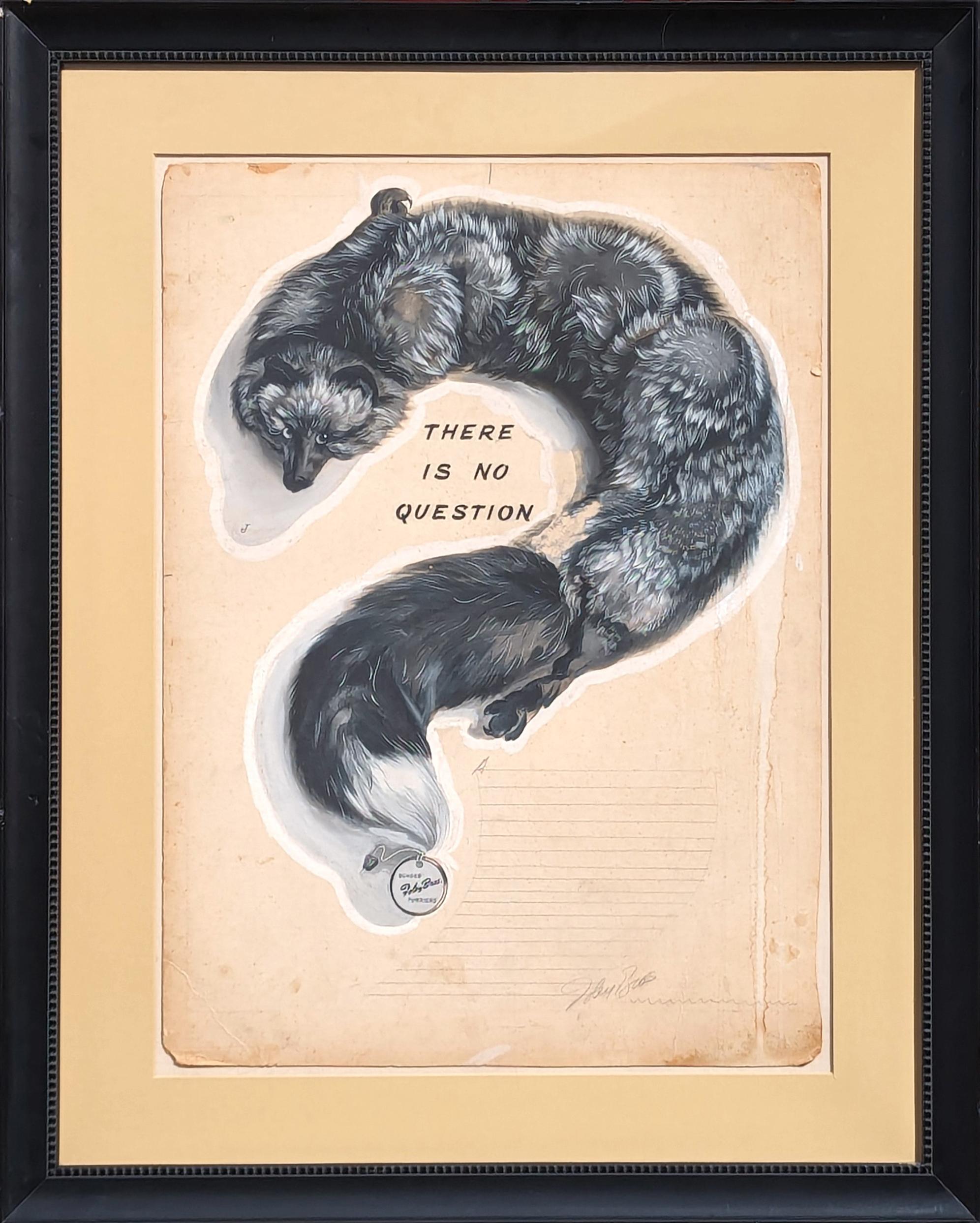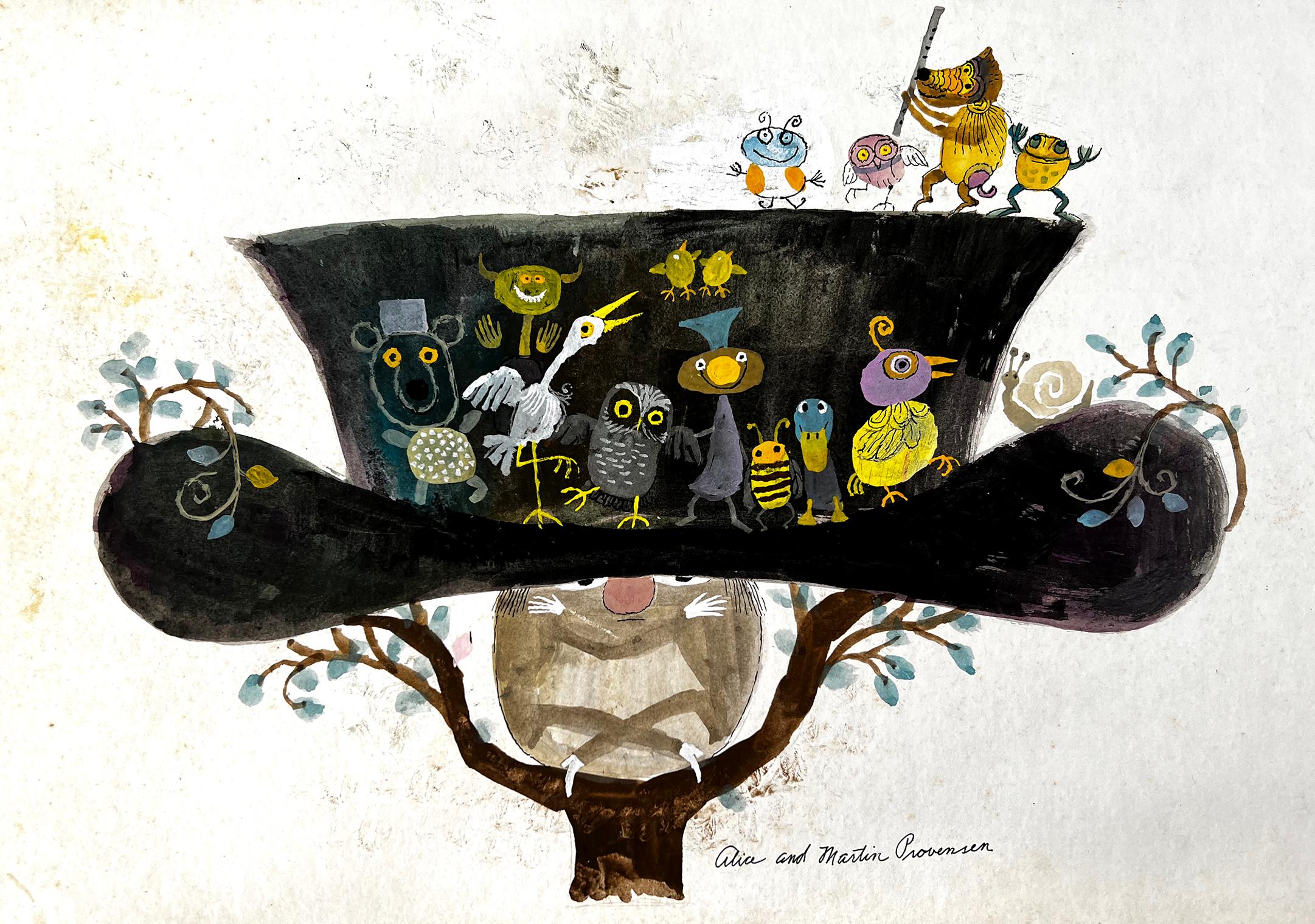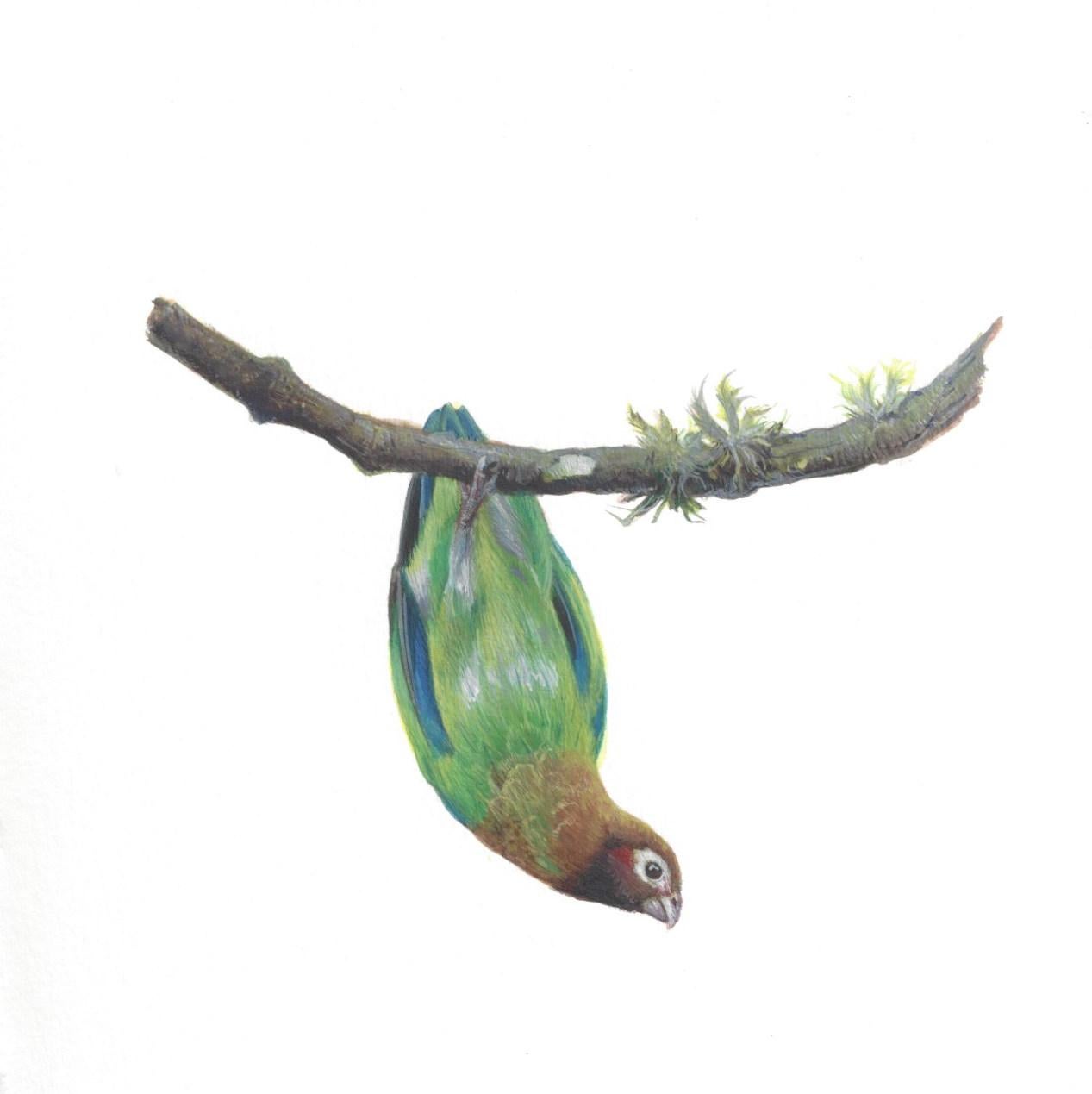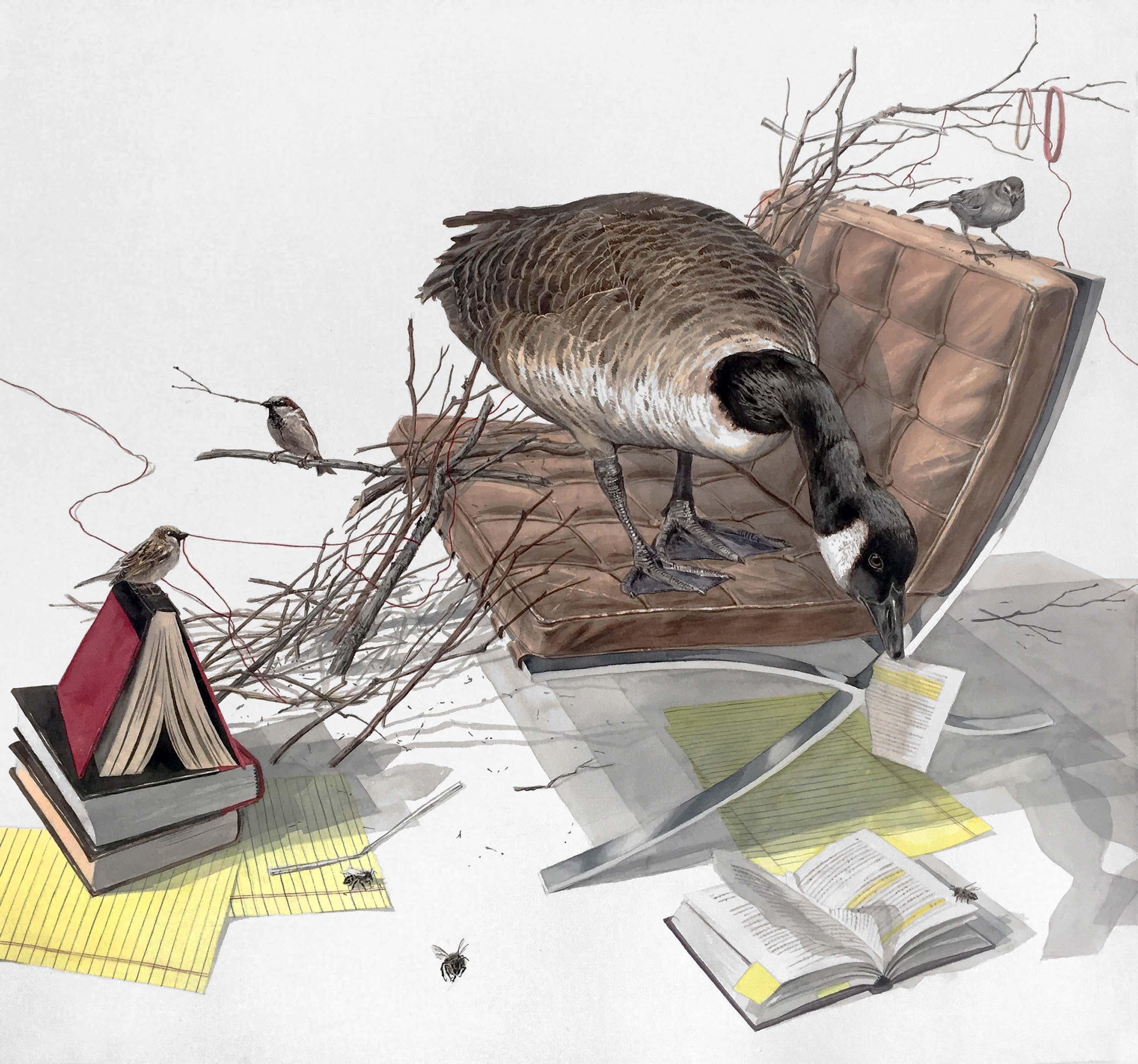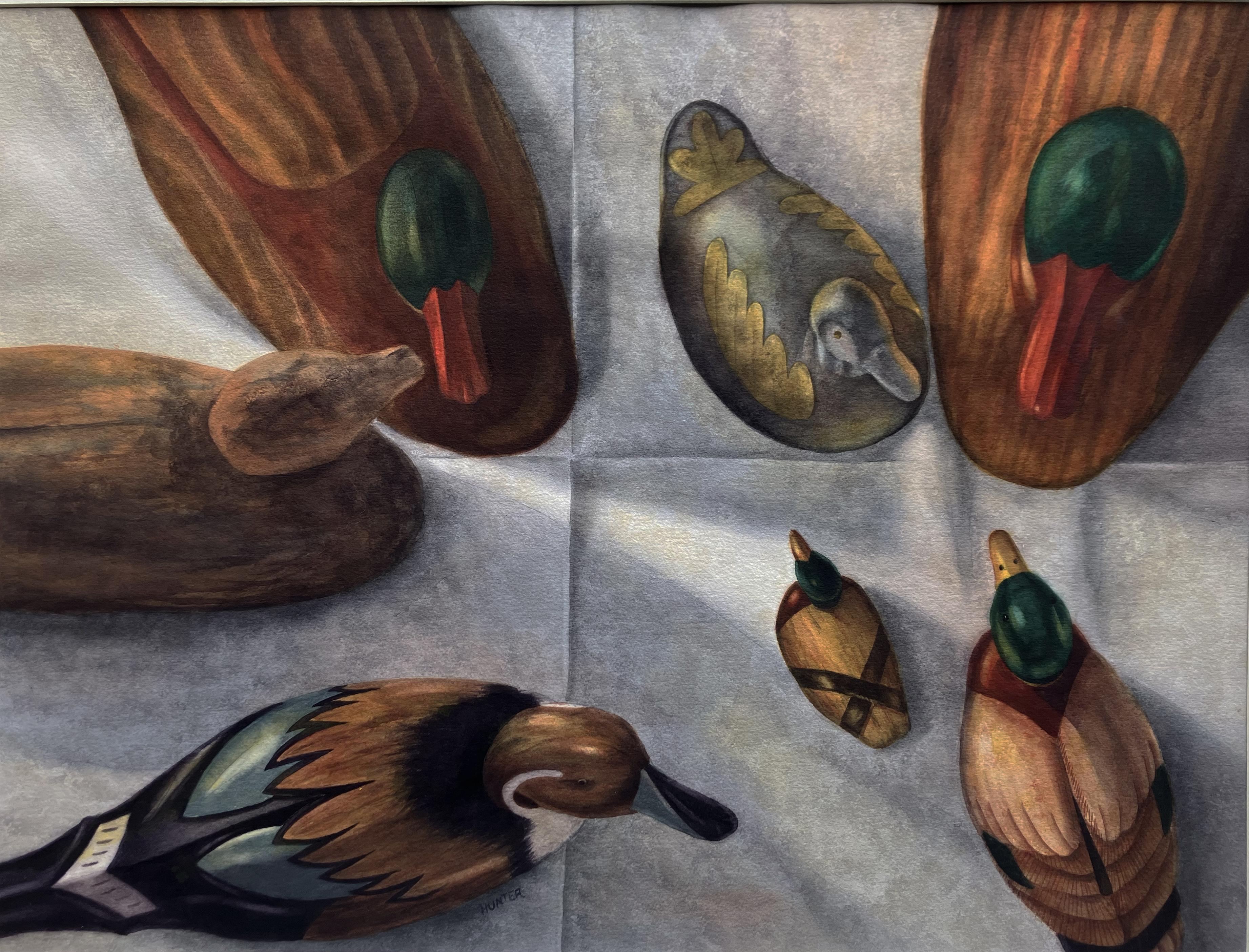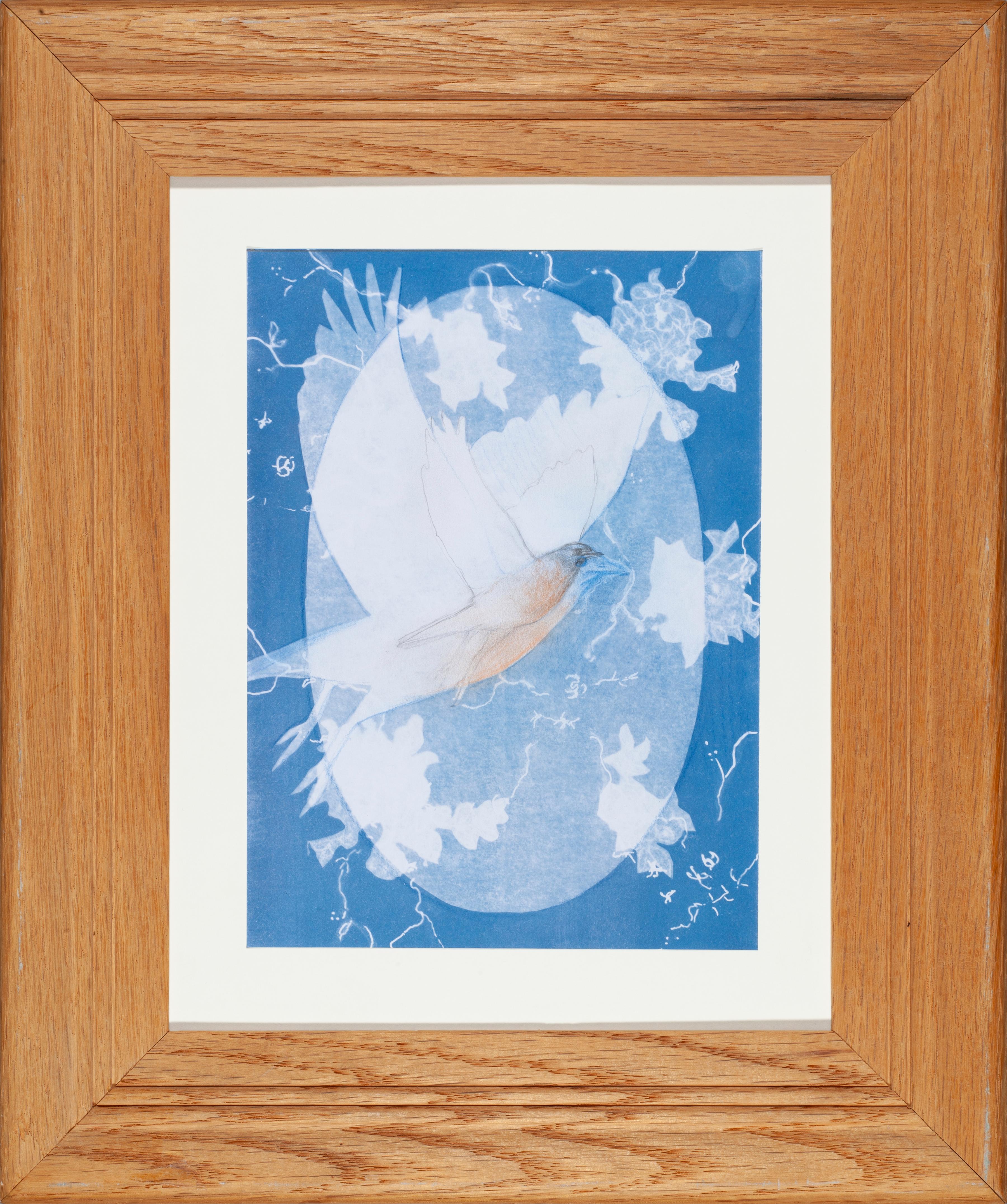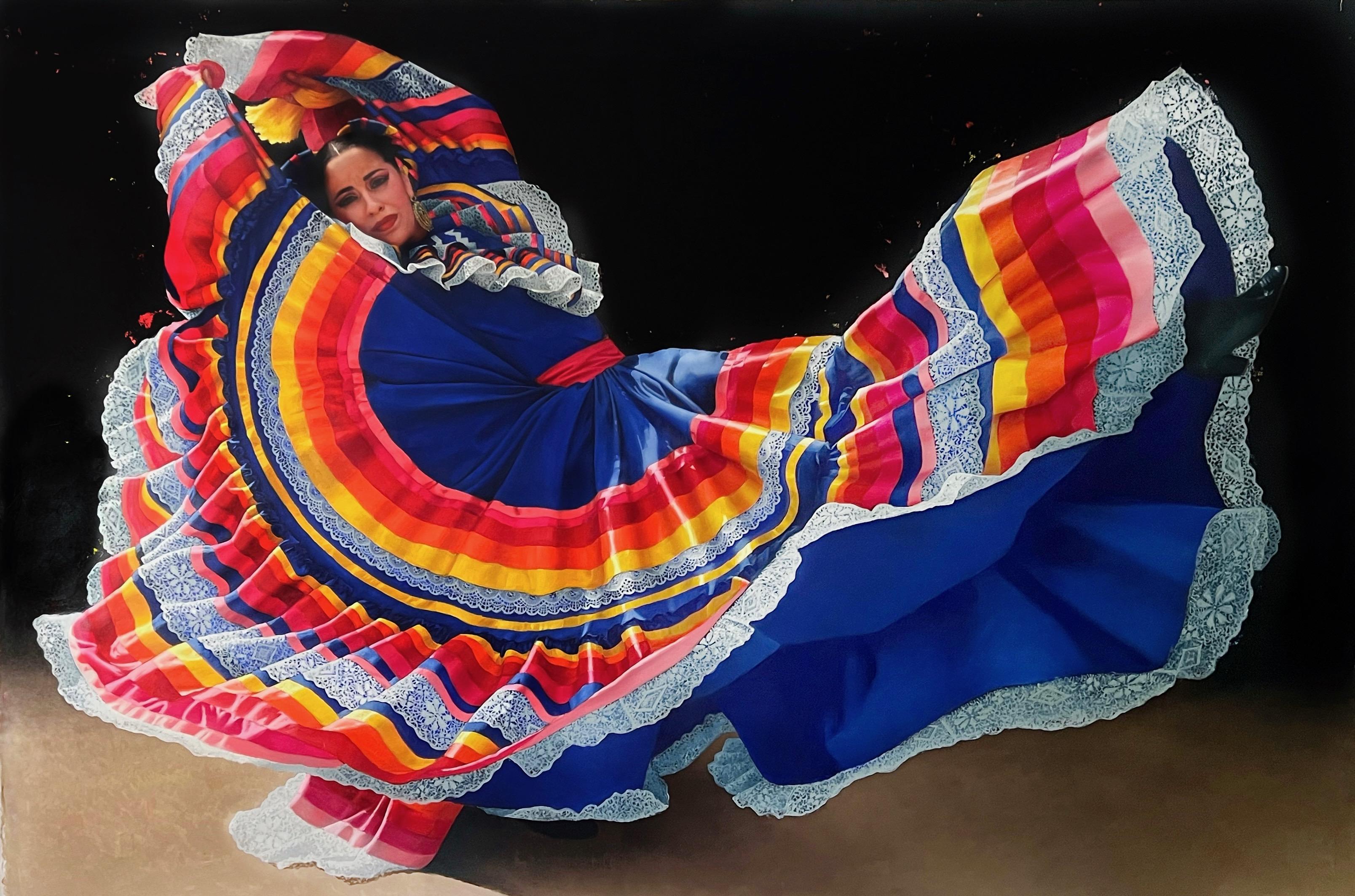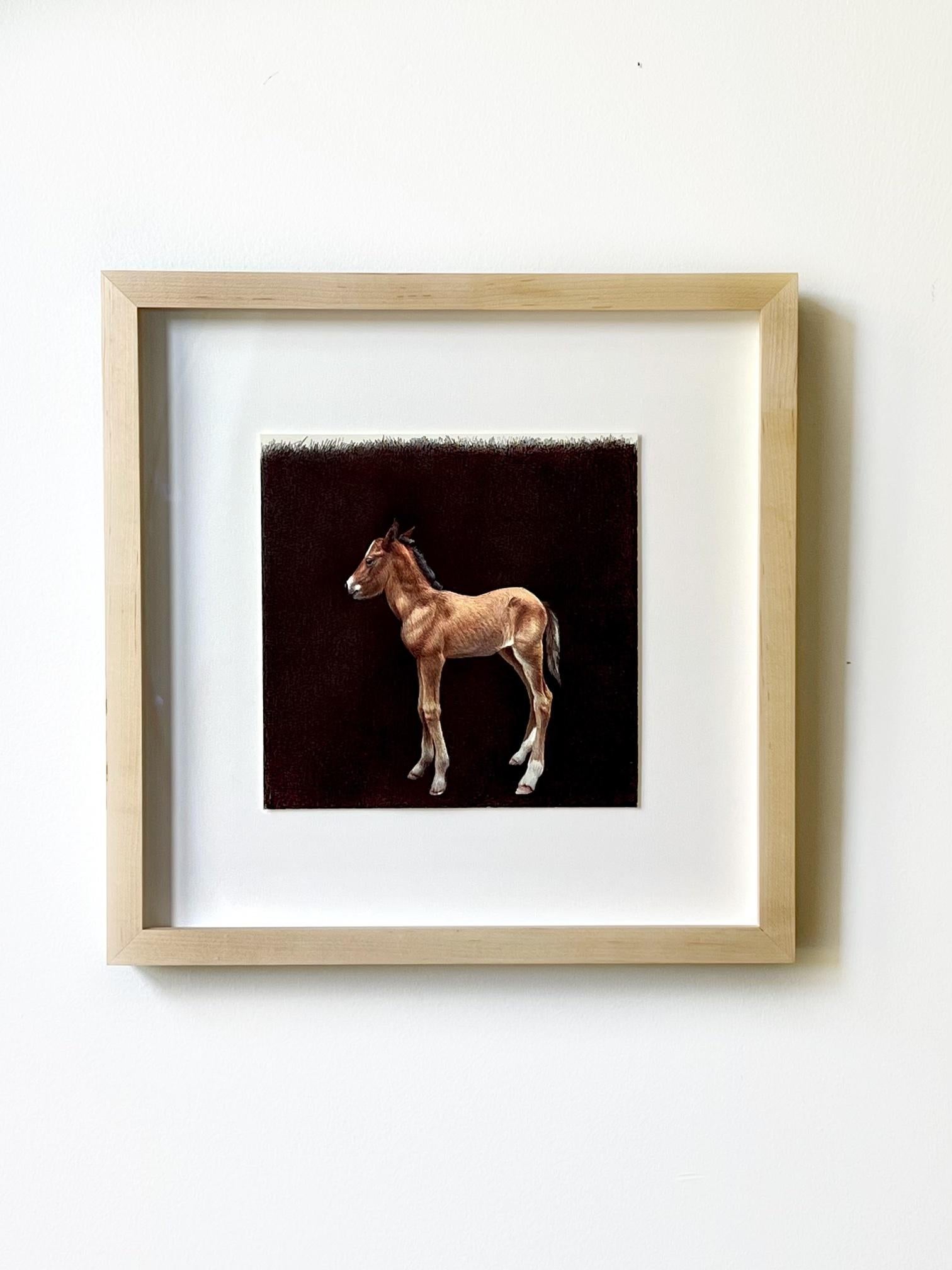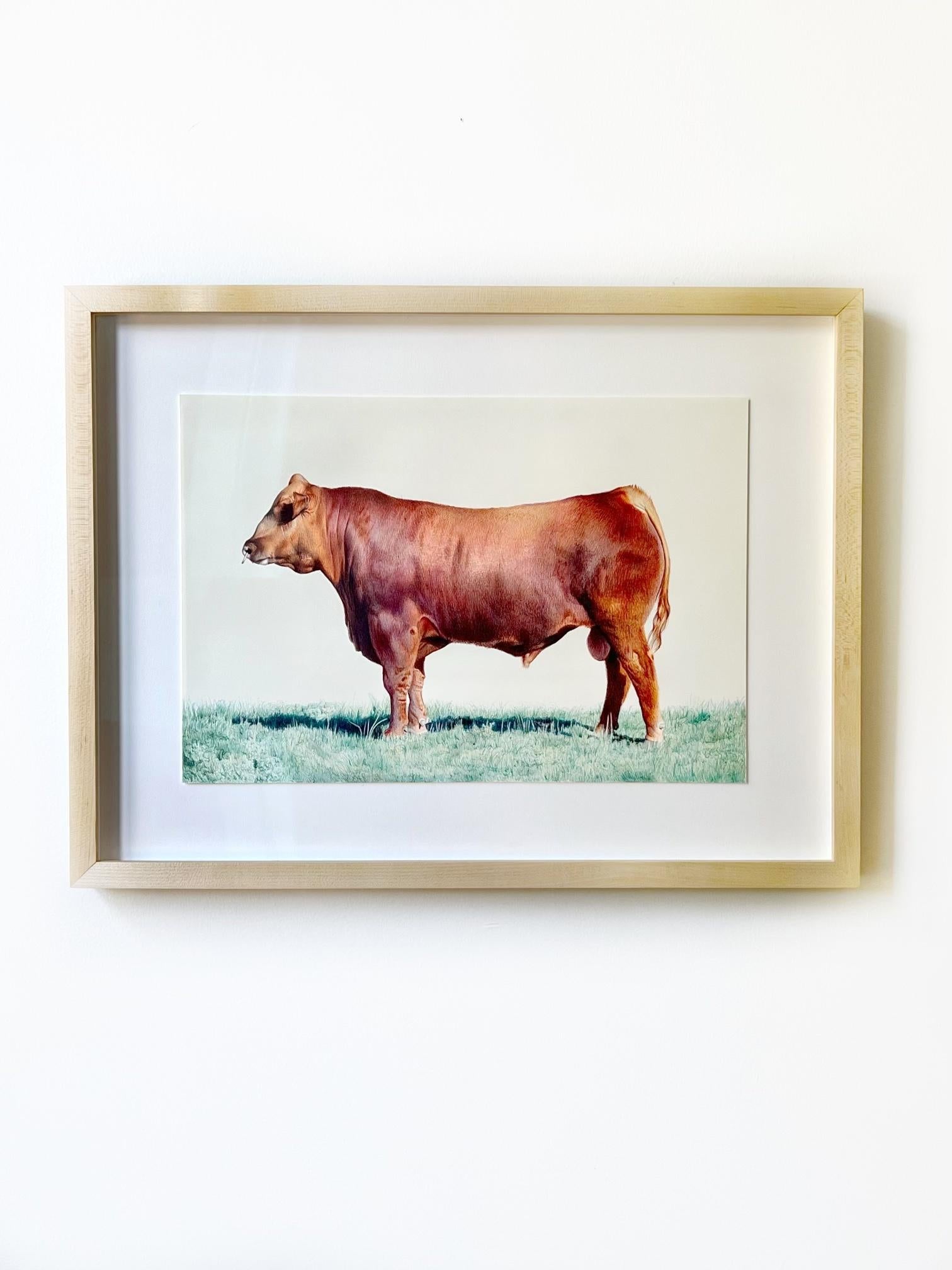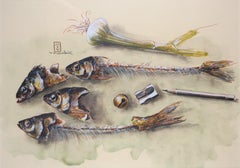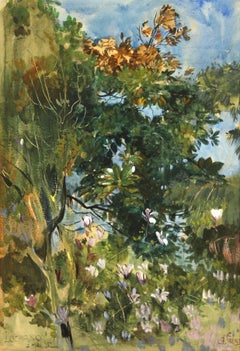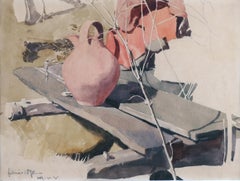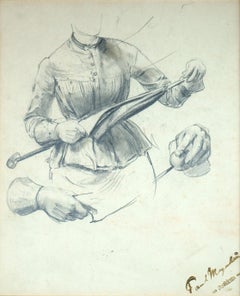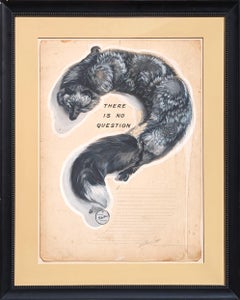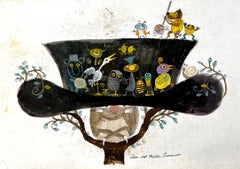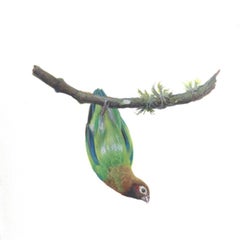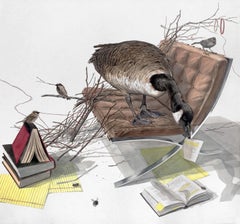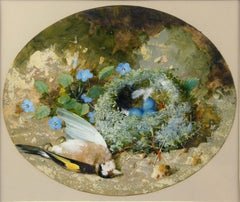
Still life with dead goldfinch - The mystic blue transcends death -
View Similar Items
Video Loading
Want more images or videos?
Request additional images or videos from the seller
1 of 6
William CruickshankStill life with dead goldfinch - The mystic blue transcends death -about 1890
about 1890
About the Item
- Creator:William Cruickshank (1848 - 1922, English)
- Creation Year:about 1890
- Dimensions:Height: 8.27 in (21 cm)Width: 9.65 in (24.5 cm)
- Medium:
- Movement & Style:
- Period:
- Condition:The drawing is in a very good condition, the frame lightly rubbed.
- Gallery Location:Berlin, DE
- Reference Number:1stDibs: LU2438211895222

About the Seller
5.0
Gold Seller
Premium sellers maintaining a 4.3+ rating and 24-hour response times
Established in 2014
1stDibs seller since 2023
17 sales on 1stDibs
Typical response time: 6 hours
Authenticity Guarantee
In the unlikely event there’s an issue with an item’s authenticity, contact us within 1 year for a full refund. DetailsMoney-Back Guarantee
If your item is not as described, is damaged in transit, or does not arrive, contact us within 7 days for a full refund. Details24-Hour Cancellation
You have a 24-hour grace period in which to reconsider your purchase, with no questions asked.Vetted Professional Sellers
Our world-class sellers must adhere to strict standards for service and quality, maintaining the integrity of our listings.Price-Match Guarantee
If you find that a seller listed the same item for a lower price elsewhere, we’ll match it.Trusted Global Delivery
Our best-in-class carrier network provides specialized shipping options worldwide, including custom delivery.More From This Seller
View AllStill life with fish bones, pencil and pencil sharpener / - The irony of art -
Located in Berlin, DE
Manfred K. Schwitteck (*1948), Still life with fish bones, pencil and pencil sharpener, 1992. watercolor over pencil on handmade paper, 31.5 x 45 cm (visible size), 47 x 61 cm (frame...
Category
1990s Surrealist Still-life Drawings and Watercolors
Materials
Etching, Watercolor
Plant Impression in Locarno - Floral Crescendo -
Located in Berlin, DE
Alexander Frenz (1861 Rheydt - 1941 Düsseldorf). Plant impression in Locarno. Gouache and watercolour. 35 x 23,5 cm (visible size), 49,5 x 38,5 cm (fra...
Category
1890s Impressionist Landscape Drawings and Watercolors
Materials
Watercolor
$844 Sale Price
20% Off
Clay jug on a bench - The essence of the clay jar revealed by the sunlight -
By Hans Richard von Volkmann
Located in Berlin, DE
Hans Richard von Volkmann (1860 Halle (Saale) - 1927 ibid.), Clay jug on a bench. Pencil and Watercolour on paper. 20 x 26,7 cm (visible size), 37 x 45 cm (frame), dated and monogrammed lower left "Februar 1890 - HR. V. V."
- Minimally tanned. Framed behind glass in a passepartout.
About the artwork
Using the technique of his early youth - pencil and watercolour - Hans Richard von Volkmann depicts a still life. However, this is not a conventional indoor still life, but an open-air depiction, painted outdoors and not in the studio. It is therefore an open-air painting, characteristic of von Volkmann's oeuvre, which could have been painted in the Willingshausen colony of painters, where open-air painting was programmatically practised there and the artist stayed there that year.
And indeed, this painting is a manifesto of open-air painting. Von Volkmann demonstrates that leaving the studio for the light of nature leads to an entirely new quality of art. To prove this, he uses the genre of still life, which can be described as the studio subject par excellence. Moreover, light plays an essential role in the classical still life. It is the real protagonist of the still life. And it is precisely this moment, essential to the still life, that von Volkmann exploits to demonstrate the potential of plein-air painting: He presents the objects as they appear in the sunlight. The date of February and the bare branches in the foreground make it clear that this is a clear winter day in bright sunlight. The delicate plant in the foreground casts a clearly defined shadow, as does the jug. However, the shadow is most pronounced on the jug itself: The underside of the handle appears almost black, making the top, and therefore the jug itself, shine all the more brightly. The shining of the objects in the sunlight is also visible on the bench. As complementary phenomena to the shadow zones, light edges can be seen on the boards of the seats and the upper foot of the bench shines entirely in the light. To achieve this intensity of light, von Volkmann activated the bright white of the painting ground.
By depicting the objects in glistening sunlight, von Volkmann demonstrates that this quality of light is only to be found outdoors. And this light leads to a new way of looking at the objects themselves. The jug on the bench seems like an accidental arrangement, as if the artist had stumbled upon this unintentional still life and captured it with fascination. And in this fascination there is a moment of realisation that refers to the objects themselves. It is only when they shine brightly in the sunlight that their true nature is revealed. In this way, sunlight allows the objects to come into their own, so to speak. Sunlight, which is not present in the studio, gives the still life an entirely new dimension of reality, which is also reflected in the colours interwoven by the sunlight: The bench and the jug stand in a harmonious grey-pink contrast to the green of the implied meadow.
The emphasis on the jug as the central subject of the picture also implies that the watercolour has not been completed. This non finito inscribes a processuality into the picture, making it clear that something processual has been depicted, the temporality of which has been made artistically permanent. This is why von Volkmann signed the painting and dated it to the month.
About the Artist
Von Volkmann made his first artistic attempts at the age of 14. He painted many watercolours of his home town of Halle. This laid the foundation for his later outdoor painting.
In 1880 his autodidactic beginnings were professionalised with his admission to the Düsseldorf Art Academy. There he studied under Hugo Crola, Heinrich Lauenstein, Johann Peter Theodor Janssen and Eduard von Gebhardt until 1888. Von Volkmann then moved to the Karlsruhe Academy, where he was Gustav Schönleber's master pupil until 1892.
In 1883 he came for the first time to Willingshausen, Germany's oldest painters' colony, at the suggestion of his student friend Adolf Lins...
Category
1890s Naturalistic Still-life Drawings and Watercolors
Materials
Watercolor
Study with Torso, Hands, and Umbrella - The characteristic of the inconspicuous
Located in Berlin, DE
Paul Friedrich Meyerheim (1842 Berlin - 1915 ibid.). Sketch of a female torso with hands and an umbrella. Pencil on paper, 27.5 x 22.5 cm (visible size)...
Category
1890s Realist Figurative Drawings and Watercolors
Materials
Pencil
Vigilant Fox - The psyche of the fox -
Located in Berlin, DE
Carl Friedrich Deiker (1838 Wetzlar - 1892 Düsseldorf). Vigilant fox. Pencil drawing on brown paper, 18 × 29.5 cm (inside measurement), 31.5 x 43.5 cm (mount), signed and dated "Deiker [18]54" at lower right.
- a little bit stained, with a light water stain at lower right
About the artwork
Carl Friedrich Deiker's consummate ability to depict animals is already evident in this early work. He brought a whole new psychological dimension to animal painting, so that one could literally speak of animal portraits.
The naturalistic appearance of the fox alone makes it seem alive. Every strand of muscle, even every hair, is captured, which requires an intensive artistic study of animal anatomy and physiology. But the fox's real liveliness comes not from its natural appearance, but from its internal movement: Stretched out, it has been brought out of rest. It turns around and, with its ears pricked up, looks intently in the direction from which it has seen something. His mouth is slightly open and his pointed teeth are bared, as if he were growling. Tension gradually takes hold of his whole body. While the hind legs were still in a relaxed position, closely observed by Deiker, one front leg was already raised, ready to begin a rising movement. The fox seems so alarmed with all its senses that one gets the impression that, at any moment, its tail will move jerkily and the animal will jump up.
While wild animals have traditionally been portrayed as beasts or anthropomorphised, often for caricatural purposes, Deiker explores their inherent nature by attempting to capture their psychic impulses. The wild animal is neither bestial nor human, but a creature in its own right, valued by Deiker for its own sake. In this way, he brought the dignity of the animal into representation and raised animal painting to a whole new artistic level.
About the artist
Carl Friedrich Deiker was the son of the drawing teacher Christian Friedrich Deiker and the younger brother of the animal painter Johannes Deiker. In addition to the family art lessons, Christian Friedrich shared a studio with his brother Johannes at Braunfels Castle, Deiker attended the drawing academy in Hanau, and from 1858 he was a student at the Karlsruhe Art Academy, where he studied under the landscape painter Johann Wilhelm Schirmer. Carl Friedrich Deiker was already in demand as an artist during his first year: Grand Duke Frederick I of Baden, Margrave Max of Baden and Grand Duke Michael of Russia bought hunting scenes by him.
In 1859 he went on a study trip to the Reinhardswald. Just as the Barbizon School had rediscovered the landscape, Deiker opened up the forest for animal painting.
From 1861-64 Deiker had his own studio in Karlsruhe, then moved to Düsseldorf, where his brother Johannes followed four years later. Deiker married a daughter of the landscape painter Karl Hilger and remained in Düsseldorf until his death.
In 1868 he finally achieved international fame with his painting 'Pursued Noble Deer' and was regarded as a virtuoso new founder of animal painting.
"Deiker brought for the first time a truly great artistic quality to animal painting [...]".
- Hans Vollmer
From 1870 he participated in the academic art exhibitions in Berlin, Dresden, Munich and Hanover. He was also very busy as an illustrator. He drew for the Gartenlaube, the Salon, the Universum, and produced many of the finely illustrated hunting and animal books of the period. He also worked as a printmaker, while his oil paintings circulated as reprints by Franz Dinger.
From 1865 to 1892 Deiker was a member of the artists' association Malkasten.
Carl Friedrich Deiker's life's work was honoured with a large posthumous memorial exhibition at the Düsseldorf Kunsthalle in 1892.
His son Carl Deiker, born in 1879, also became a painter.
Selection of art museums that own works by Carl Friedrich Deiker:
Hamburger Kunsthalle / Kunsthalle Karlsruhe / Kunstmuseum Düsseldorf / Wallraff Richartz Cologne.
Selected Bibliography
H. Schmidt: Johannes and...
Category
1850s Naturalistic Animal Drawings and Watercolors
Materials
Pencil
$1,285 Sale Price
20% Off
Feeding the Kittens - Little cat mother -
Located in Berlin, DE
Ernst Albert Fischer-Cörlin (1853 Körlin - 1932 Persante). Feeding the Kittens, 1893. Pencil on painting cardboard, 38 x 29 cm. Signed and dated by the artist at lower left "E[rnst] A[lbert] Fischer=Cörlin 1893".
- Lightly stained, somewhat dusty and minimally foxed.
- Little cat mother -
About the artwork
Daughter, mother and grandmother gather in the sunlight to feed a litter of kittens. The mother and grandmother hold the lively, playful animals in their arms, while the young girl feeds two of the four kittens with cookies. There is also a small bucket of milk and a bowl of milk. The women and the girl watch as the cute, still blind animals eat.
It is a scene taken from everyday life, but it also has an allegorical dimension, bringing maternal care into the representation. Three generations are represented, with the grandmother and the mother already mothers. They not only offer the kittens to the youngest, but also proudly observe the maternal care that the youngest gives to the kittens. Like the kittens, she will grow up and become a mother herself, so the image is also an allegory of life's ever-new beginnings. In keeping with this, the morning sun shines into the picture from the right. Fischer-Cörlin has masterfully worked out the quality of the light, with its light and dark areas, with the pencil used...
Category
1890s Academic Animal Drawings and Watercolors
Materials
Cardboard, Carbon Pencil
$348 Sale Price
20% Off
You May Also Like
"There is No Question" Early Modern Original Foley's Ad Layout with Mink Stole
Located in Houston, TX
Early modern original watercolor and gouache ad layout for Foley's by Houston portraitist Robert C. Joy. The work features a mink stole laid out in the shape of a question mark. Ther...
Category
Early 20th Century American Modern Animal Drawings and Watercolors
Materials
Watercolor, Gouache
Dancing Animal Critters on a Top Hat, Bear, Frog, Owl, Crane Bird, Bee, Snail
By Alice and Martin Provensen
Located in Miami, FL
Enter the whimsical world of famed children's book illustrators husband and wife team Alice and Martin Provensen. On top of a heavy tree trunk sits a...
Category
1980s American Modern Animal Drawings and Watercolors
Materials
Gouache
Dina Brodsky, Brown-Hooded Parrot, realist gouache animal miniature, 2018
By Dina Brodsky
Located in New York, NY
Dina Brodsky uses gouache and watercolor on paper in "Brown-Hooded Parrot," to depict the multi-hued bird hanging precariously from a thin branch. The li...
Category
2010s Realist Animal Drawings and Watercolors
Materials
Paper, Watercolor, Gouache
Large Scale Watercolor "The Thread" framed (goose, birds, books)
By Thomas Broadbent
Located in New York, NY
watercolor on paper, 39"x40" (artwork size) 43" x 43.75"x2" framed size
This beautifully painted watercolor depicts a Canada goose standing atop a modernist chair with the natural c...
Category
2010s Contemporary Animal Drawings and Watercolors
Materials
Watercolor, Archival Paper
Sitting Ducks
Located in San Francisco, CA
Artist: Patricia Hunter - American
Title: Sitting Ducks
Year: 1985
Medium: Watercolor
Sight size: 18 x 24 inches.
Matted size: 24 x 30 inches
Signatur...
Category
1980s Realist Still-life Drawings and Watercolors
Materials
Paper, Watercolor
Richard Parker - The Aquatic Life at Sea / Life of Pi
By Adrienne Sherman
Located in Burlingame, CA
Bengal Tiger watercolor inspired by the novel The Life of Pi's, whose main character, Richard Parker — the tiger who is the epitome of beauty, power, an...
Category
21st Century and Contemporary Contemporary Still-life Drawings and Water...
Materials
Watercolor, Handmade Paper
